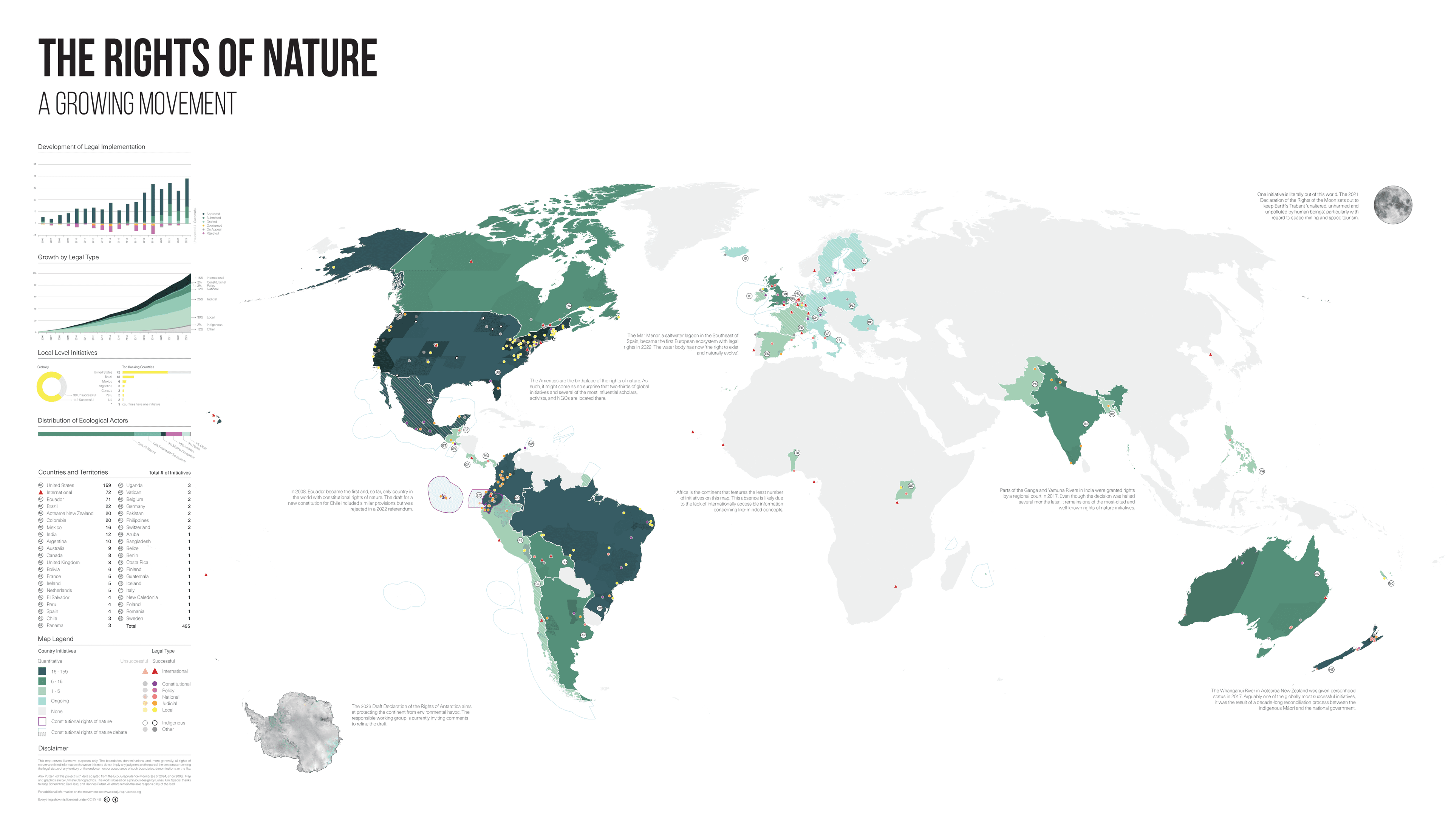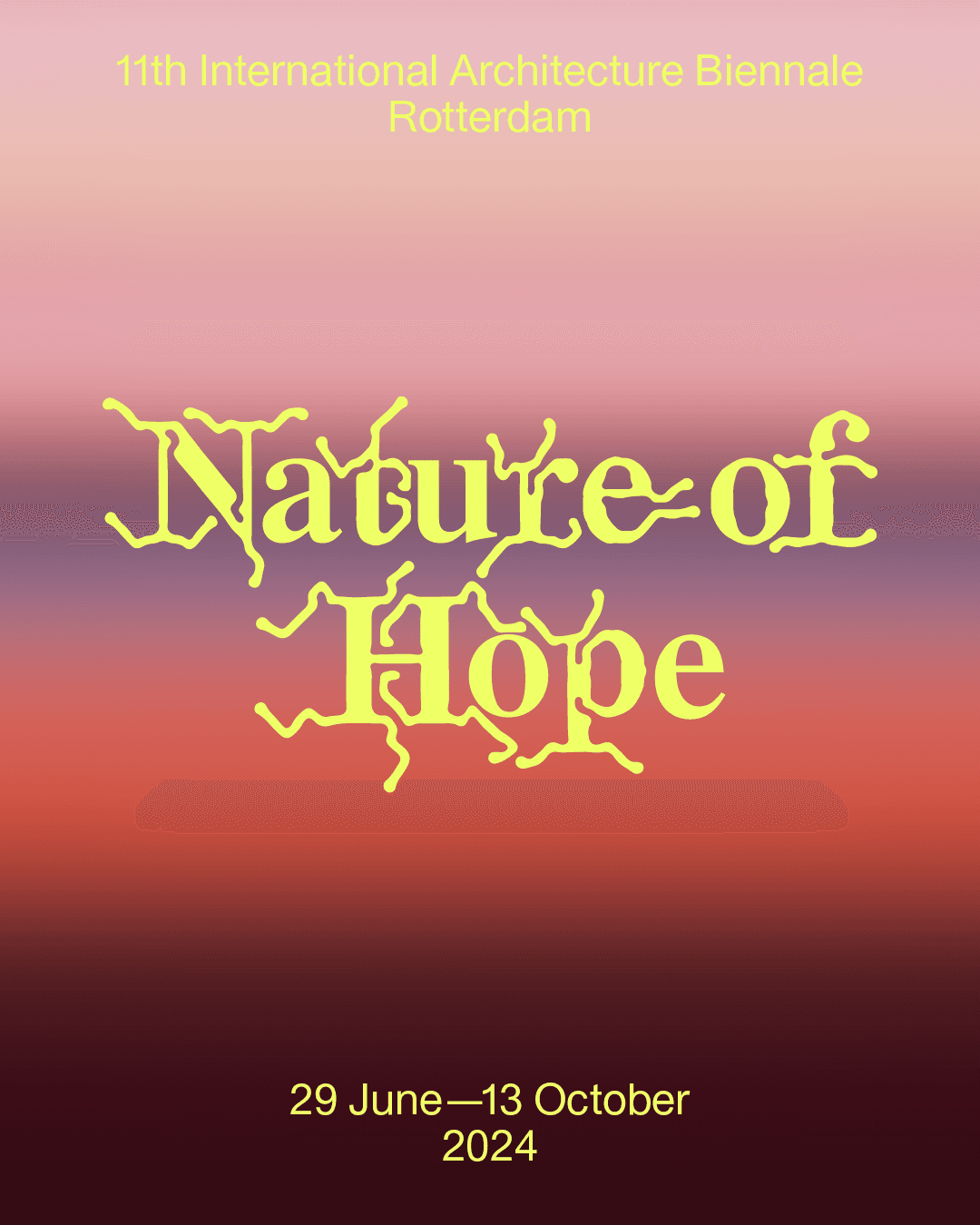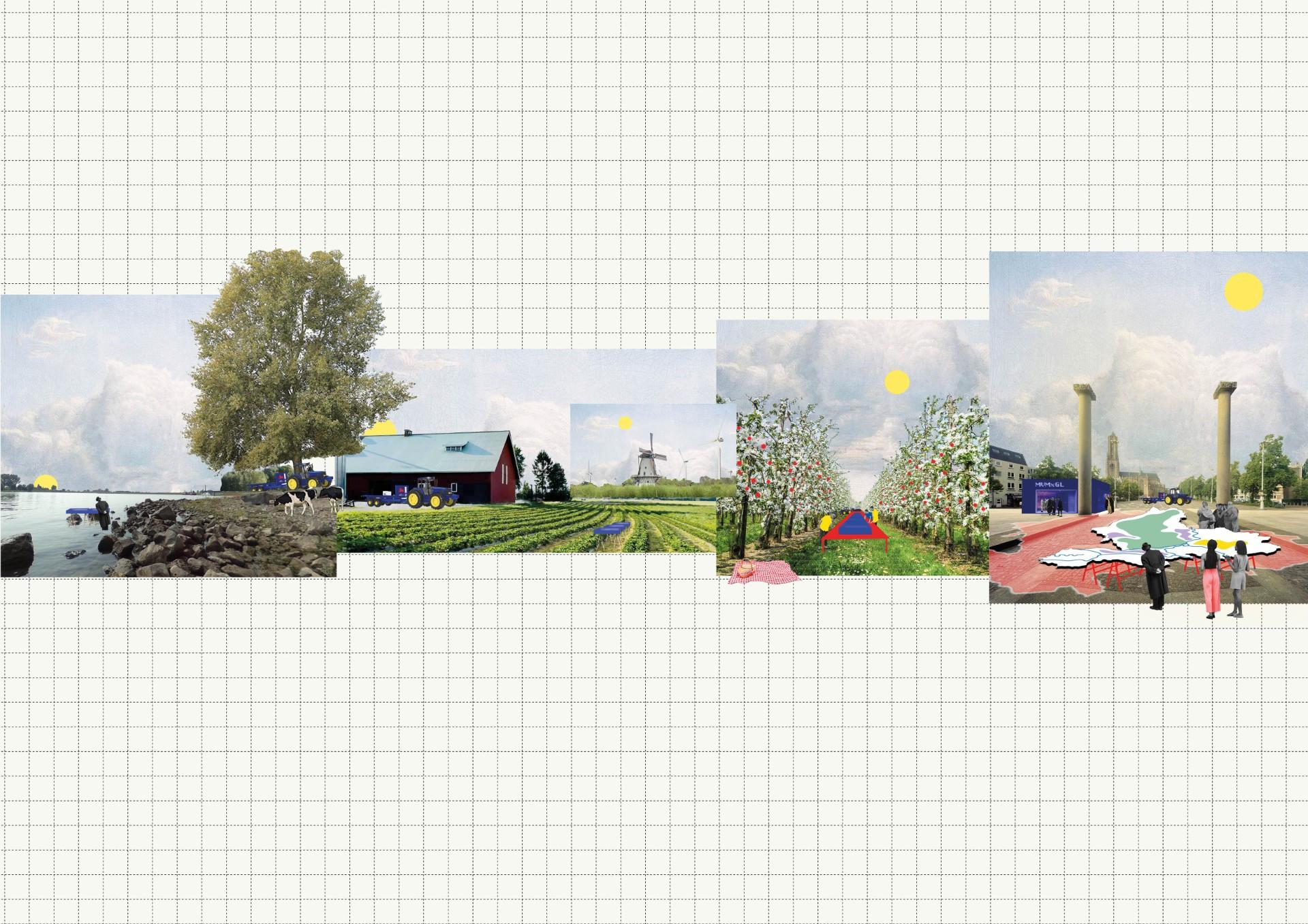In a recent publication, a map exhibited at the IABR 2024 'Nature of Hope' exhibition and produced by Alex Putzer in collaboration with Climate Cartographics became available to a wider online audience.
The rights of nature describe a concept that recognizes the value of nature independent of human interests. Originating in the seminal article ‘Should Trees Have Standing’ by Christopher Stone (1972), it breathes life into a relational understanding between humans and their environment. It is an understanding that has always coexisted in both Western and non-Western worlds. It is one, however, that has all too frequently been ignored.
With the rights of nature, to quote Article 71 of the Constitution of Ecuador (2008), nature begins to have ‘the right to integral respect for its existence.’ Growing both in theory and practice, between 2006 and 2024, 495 initiatives in 40 countries and territories across the globe paint the image of a diverse movement. Because of its multifaceted cultural expressions and legal implementations, it’s a challenge to track. The Eco Jurisprudence Monitor took up this challenge and has been documenting global initiatives since 2022. The website acts as a continuously updated interactive platform operating on the principles of open access and collaboration.
Alex Putzer and Climate Cartographics used data from the Eco Jurisprudence Monitor to create a map infographic that introduces the rights of nature to a general audience. The IABR 2024 'Nature of Hope' exhibition featured the map as one of the first works in the entry space of the New Institute in Rotterdam. This map has recently been published for open access in Journal of Maps.






